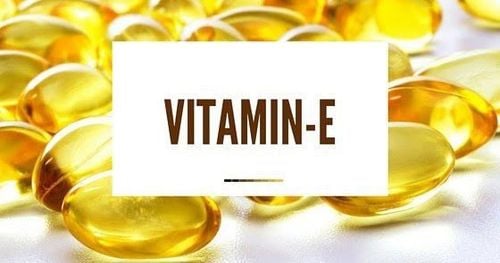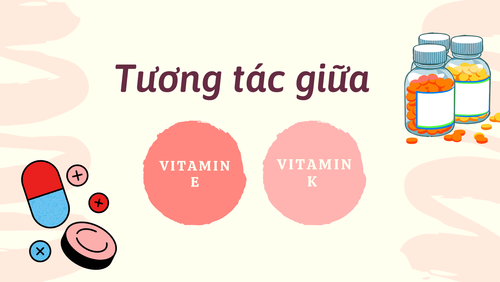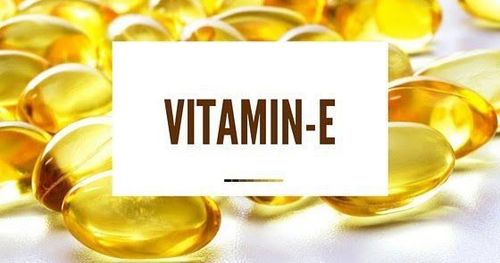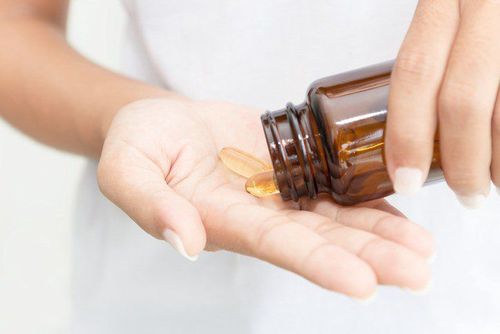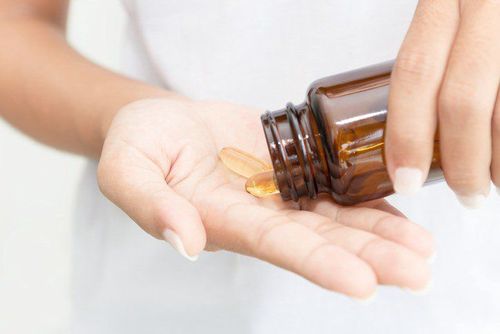This is an automatically translated article.
Unlike other vitamins and minerals, such as calcium, iron, and vitamin D, parents usually don't worry that their child isn't getting enough vitamin E. Children often eat plenty of foods that are good sources of vitamin E. , especially sunflower seeds, and other nuts. Vitamin E plays an important role in the growth and development of children. In this article, you will learn about the benefits of vitamin E for children and the foods rich in vitamin E in their diet.1. What is Vitamin E? Why is vitamin E important?
When vitamin E was discovered in 1922, it was called the "reproductive vitamin". The researchers found that mice fed a diet deficient in vitamin E were able to become infertile and only regained their fertility after supplementing with the vitamin.A few years after its discovery, vitamin E was scientifically named “tocopherol” which comes from the Greek words tokos meaning infant and phero meaning birth.
Although the name makes many people think this is a single substance, vitamin E is actually a family of essential vitamins that includes both tocopherols and tocotrienols. Vitamin E naturally exists in eight chemical forms with varying degrees of biological activity. Alpha-tocopherol is the only form of vitamin E that is recognized as meeting the requirements for human use. Vitamin E is a fat-soluble nutrient, like vitamin D, which means it needs to be consumed with fat for optimal absorption by the body.
Vitamin E helps strengthen the immune system and support the body to fight bacteria and viruses. Vitamin E also has the ability to keep blood vessels dilated wide enough to ensure blood circulation in the body. In addition, vitamin E also plays a role in connecting cells to make them perform many important functions together.
Another extremely important use of vitamin E is as an antioxidant in the body, protecting cells as well as cell membranes from the attack of free radicals. There is a lot of scientific evidence proving vitamin E's effective anti-aging as well as neutralizing free radicals. Free radicals are closely related to premature aging, cancer, cataracts. crystals and many other degenerative diseases such as macular degeneration cause vision loss. Furthermore, vitamin E benefits the skin by protecting it from UV radiation and has been shown to support the immune system, helping to prevent infections.
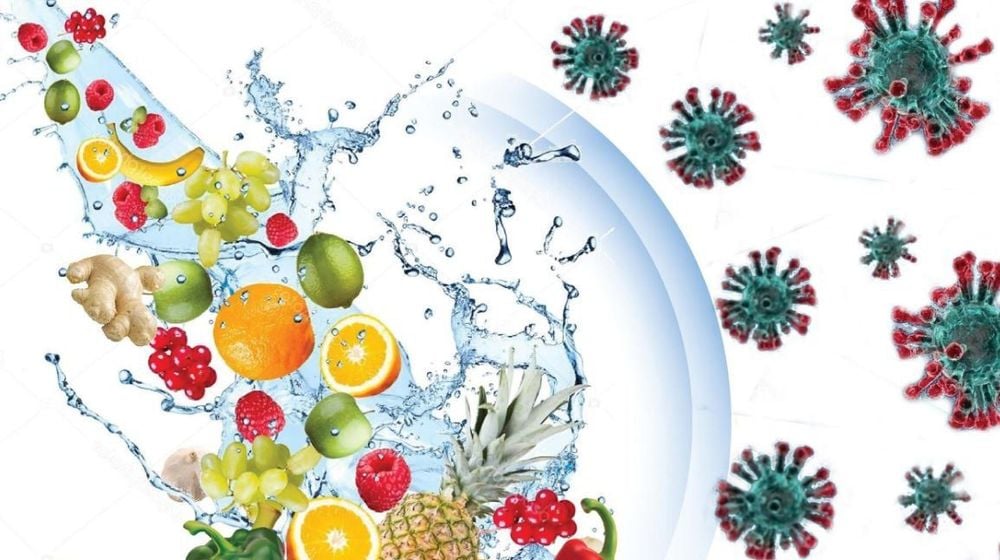
Vitamin E giúp tăng cường hệ miễn dịch và hỗ trợ cơ thể chống lại vi khuẩn cũng như virus
2. How much vitamin E does your child need?
The amount of vitamin a child needs to provide daily can vary depending on the age of the child, specifically:Children 0 to 6 months old: 4mg or 6 international units (IU) of vitamin E per day. Children 7 to 12 months of age: 5mg or 7.5 international units of vitamin E per day. Children 1 to 3 years: 6mg or 9 international units of vitamin E per day. Children 4 to 8 years: 7 mg or 10.5 international units of vitamin E per day. Children 9 to 13 years: 11 mg or 16.4 international units of vitamin E per day. Children 14 years and older: 15 mg or 22.4 international units of vitamin E per day. Many children do not get enough vitamin E from their daily diet alone. However, cases of vitamin E deficiency that are severe enough to cause health problems are rare. Most children and even adults get a little less than the recommended amount of vitamin E.
Parents also do not need to supplement their baby's vitamin E with the recommended daily amount. Instead, aim to make sure your vitamin E intake is moderate over a few days or a week.
3. Good source of vitamin E
Vitamin E can be found in many foods including fruits, vegetables, root vegetables, and nuts. In addition to supplementing vitamin E from daily food sources, parents can also think of supplementing vitamin E for children from other oral multivitamins.Unfortunately, vitamin E is often not listed on the labels of some foods. This makes it difficult for parents to choose foods to supplement vitamin E for their babies. Normally, only vitamin A and vitamin C or minerals such as iron and calcium need to be declared on food labels. Here are the food sources and vitamin E content in each type for parents to consider and choose accordingly:
30g dry roasted almonds: 7 mg vitamin E. 1 teaspoon germ oil Wheat: 6 mg vitamin E. 1 tablespoon almond butter: 4 mg vitamin E. 1 tablespoon sunflower seed butter: 4 mg vitamin E. 1 tablespoon fine peanut butter: 2 mg vitamin E. 30g dry roasted peanuts: 2 mg vitamin E 1 teaspoon sunflower oil: 1.8 mg vitamin E. 1 teaspoon safflower oil: 1.5 mg vitamin E. 1/2 medium kiwi (peeled): 1 mg vitamin E. 1 teaspoon corn oil: 0.6 mg vitamin E. 1/4 cup cooked spinach soup: 0.8 mg vitamin E. 1/4 cup cooked broccoli soup: 0.6 mg vitamin E. 1 teaspoon soybean oil: 0.4 mg vitamin E. 1/4 ripe mango: 0.9 mg vitamin E. The amount of vitamin E in foods can vary slightly, depending on the size or brand. of the product. Note that nuts and seeds present a choking hazard for young children, and nut butters should be spread thinly for the same reason. Children may eat more or less than the recommended amount of vitamin E depending on their age and appetite, so parents should estimate the nutritional content of foods accordingly. young.
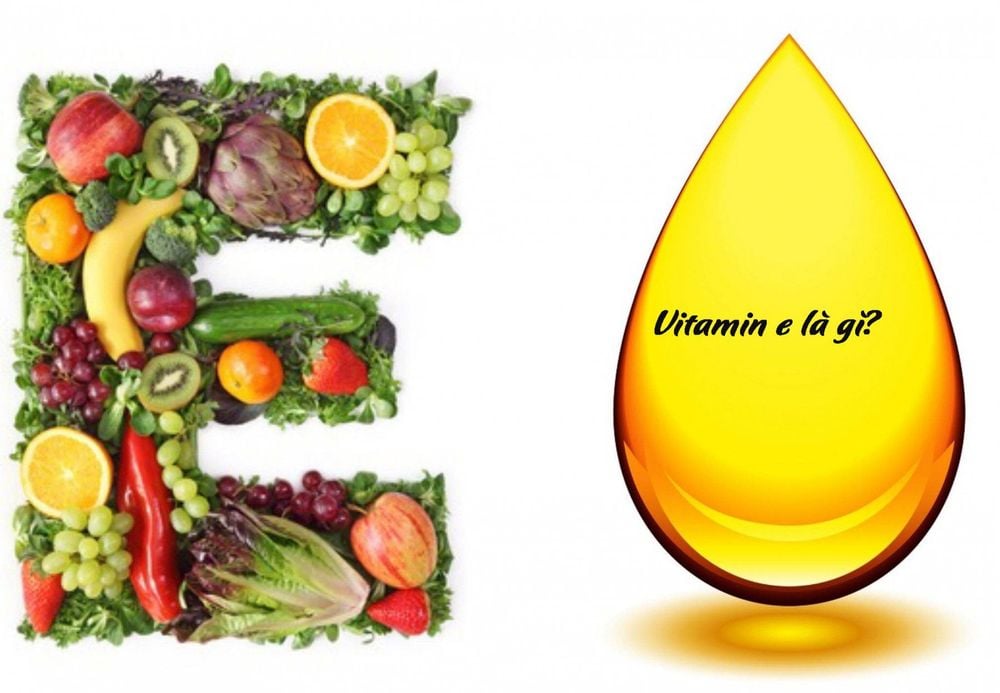
Vitamin E có trong nhiều loại thực phẩm bao gồm trái cây, rau, củ quả và các loại hạt
4. Can your child get too much vitamin E?
It's more likely that your child won't be getting the full amount of vitamin E she needs on a daily basis. Because vitamin E can act as an anticoagulant, a deficiency in this nutrient can increase a baby's risk of bleeding-related problems. The Food and Nutrition Board of the Institute of Medicine has set a higher intake level for vitamin E, which is considered safe enough for children. A 2 or 3 year old child should get no more than 200mg equivalent of 300 international units of vitamin E per day. Meanwhile, a child 4 to 8 years old should get no more than 300 mg or 450 international units of vitamin E per day.Vitamin E is a group of nutrients essential for the development of children. Not only helps children strengthen the immune system to fight diseases, vitamin E is also an effective antioxidant, protecting cells from harmful agents as well as slowing down the aging process in adults. Usually children do not get enough vitamin E from their daily diets, however, this deficiency is often insignificant. In the case of vitamin E supplements for children, parents should pay attention to ensure a safe threshold for children. Less than 200 mg for children 1-3 years old and less than 300 mg for children 4-8 years old.
Besides vitamin E, parents also need to supplement their children with essential micro-minerals such as zinc, lysine, chromium, selenium, vitamin B1, ... to fully meet the nutritional needs of children. The addition of these essential vitamins also supports digestion, enhances nutrient absorption, improves anorexia, and helps children eat well. Parents can simultaneously apply dietary supplements and functional foods derived from nature for easy absorption. Do not forget to regularly visit the website vimec.com to update useful baby care information.
Reference sources: babycenter.com, jillcastle.com, verywellfamily.com




